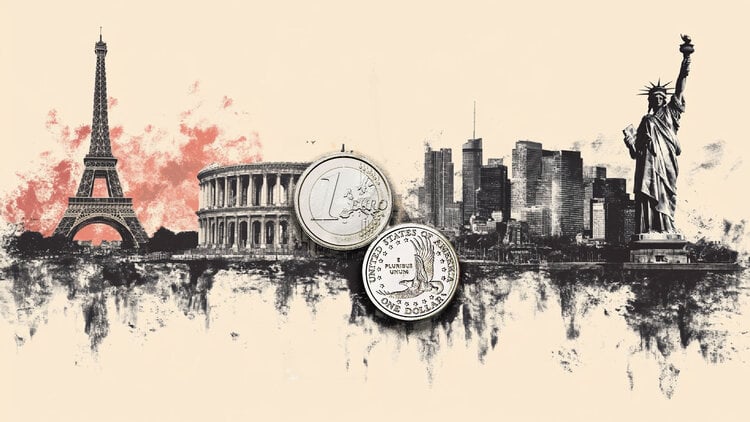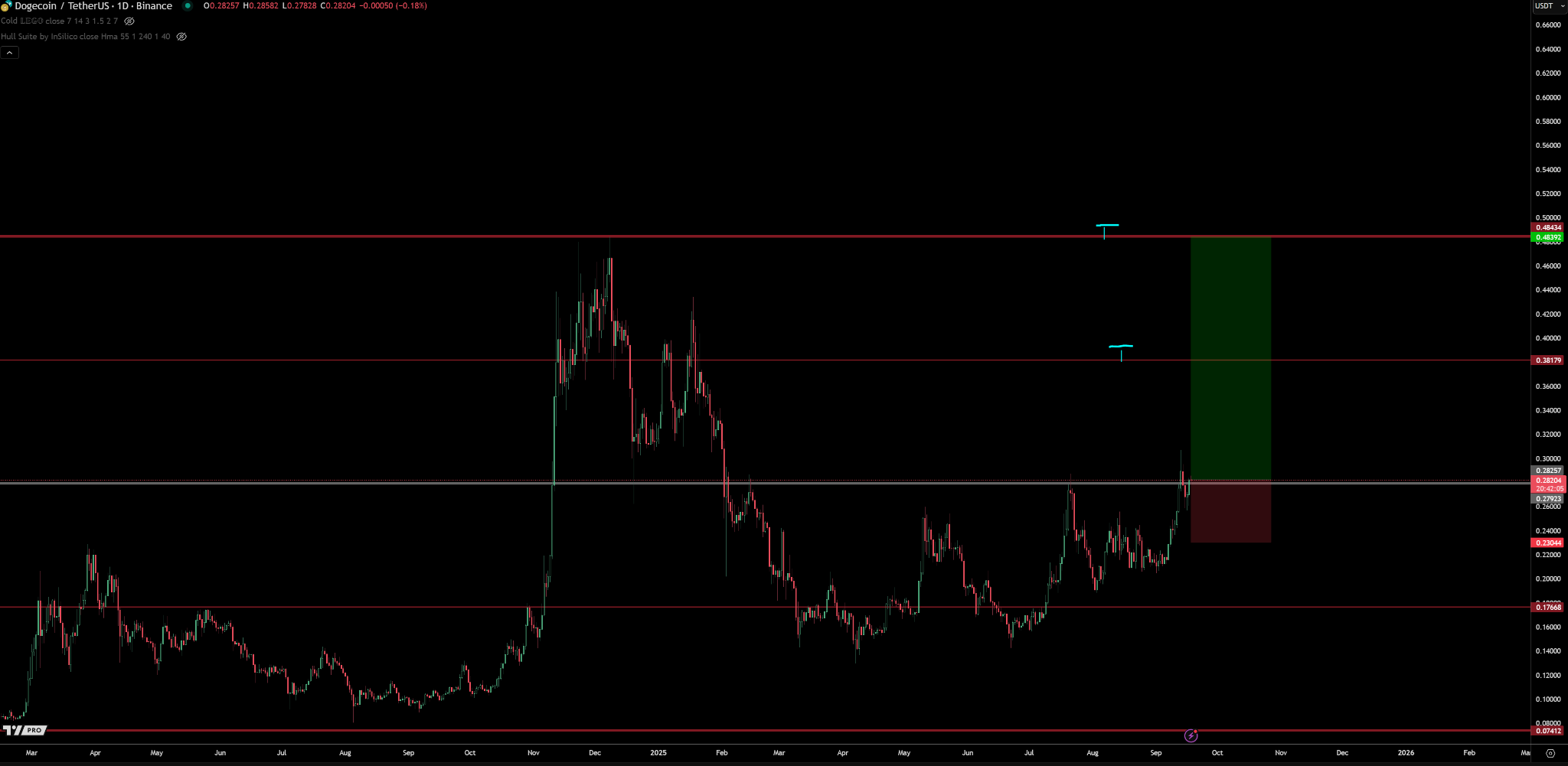Category: Forex News, News
Euro loses bullish momentum on mixed ECB commentary
- EUR/USD declines toward 1.1700 after closing in positive territory on Thursday.
- Comments from ECB policymakers highlight a difference of opinion on inflation outlook.
- The technical outlook points to a loss of bullish momentum in the short term.
EUR/USD struggles to hold its ground and declines toward 1.1700 on Friday after posting modest gains on Thursday. The pair’s near-term technical outlook points to a loss of bullish momentum as markets assess comments from European Central Bank (ECB) policymakers.
Euro Price This week
The table below shows the percentage change of Euro (EUR) against listed major currencies this week. Euro was the weakest against the Australian Dollar.
| USD | EUR | GBP | JPY | CAD | AUD | NZD | CHF | |
|---|---|---|---|---|---|---|---|---|
| USD | -0.05% | -0.24% | -0.25% | 0.08% | -1.44% | -0.98% | -0.16% | |
| EUR | 0.05% | -0.19% | -0.14% | 0.12% | -1.37% | -0.88% | -0.11% | |
| GBP | 0.24% | 0.19% | -0.04% | 0.31% | -1.19% | -0.69% | 0.08% | |
| JPY | 0.25% | 0.14% | 0.04% | 0.26% | -1.22% | -0.87% | 0.11% | |
| CAD | -0.08% | -0.12% | -0.31% | -0.26% | -1.43% | -1.00% | -0.24% | |
| AUD | 1.44% | 1.37% | 1.19% | 1.22% | 1.43% | 0.50% | 1.29% | |
| NZD | 0.98% | 0.88% | 0.69% | 0.87% | 1.00% | -0.50% | 0.78% | |
| CHF | 0.16% | 0.11% | -0.08% | -0.11% | 0.24% | -1.29% | -0.78% |
The heat map shows percentage changes of major currencies against each other. The base currency is picked from the left column, while the quote currency is picked from the top row. For example, if you pick the Euro from the left column and move along the horizontal line to the US Dollar, the percentage change displayed in the box will represent EUR (base)/USD (quote).
The ECB left key rates unchanged after the September policy meeting, as widely anticipated. In the post-meeting press conference, ECB President Lagarde noted that the disinflationary process is over and noted that a stronger Euro could bring inflation down more than expected.
Meanwhile, the US Dollar (USD) came under bearish pressure on Thursday and helped EUR/USD push higher after the data from the US showed that the annual Consumer Price Index (CPI) inflation rose to 2.9% in August as expected, while the weekly Initial Jobless Claims climbed to 263,000 in the week ending September 6 from 236,000 in the previous week.
Early Friday, ECB officials’ mixed tone make it difficult for the Euro to preserve its strength.
ECB Governing Council member Gediminas Šimkus noted that inflation has stabilized at the targeted level but added that risks remain high. Similarly, Governing Council member Christodoulos Patsalides argued that there is currently no need for the ECB to lower interest rates further to deliver stable inflation.
On the other hand, policymaker Olli Rehn said that they must be mindful of downside risks to inflation stemming from cheaper energy prices and a stronger Euro, while Governing Council member Jose Luis Escriva noted that the Gross Domestic Product (GDP) growth is slow in the eurozone, with competitiveness causing a problem.
In the second half of the day, the US economic calendar will feature the University of Michigan’s (UoM) Consumer Sentiment Index data for August. In case the 1-year Consumer Inflation Expectations component of the survey rises further, the USD could hold its ground and cause EUR/USD to stretch lower heading into the weekend.
EUR/USD Technical Analysis
The Relative Strength Index (RSI) indicator on the 4-hour chart declines toward 50 and EUR/USD trades near the 20-period Simple Moving Average, reflecting a loss of bullish momentum.
On the downside, the 1.1680-1.1665 area, where the 20-day and the 50-day Simple Moving Averages (SMAs) are located, aligns as a key support level before 1.1650-1.1640 (200-period SMA, lower limit of the ascending regression channel) and 1.1600 (static level, round level).
Looking north, resistance levels could be seen at 1.1740 (static level), 1.1770 (static level) and 1.1790-1.1800 (upper limit of the ascending channel, static level).
ECB FAQs
The European Central Bank (ECB) in Frankfurt, Germany, is the reserve bank for the Eurozone. The ECB sets interest rates and manages monetary policy for the region.
The ECB primary mandate is to maintain price stability, which means keeping inflation at around 2%. Its primary tool for achieving this is by raising or lowering interest rates. Relatively high interest rates will usually result in a stronger Euro and vice versa.
The ECB Governing Council makes monetary policy decisions at meetings held eight times a year. Decisions are made by heads of the Eurozone national banks and six permanent members, including the President of the ECB, Christine Lagarde.
In extreme situations, the European Central Bank can enact a policy tool called Quantitative Easing. QE is the process by which the ECB prints Euros and uses them to buy assets – usually government or corporate bonds – from banks and other financial institutions. QE usually results in a weaker Euro.
QE is a last resort when simply lowering interest rates is unlikely to achieve the objective of price stability. The ECB used it during the Great Financial Crisis in 2009-11, in 2015 when inflation remained stubbornly low, as well as during the covid pandemic.
Quantitative tightening (QT) is the reverse of QE. It is undertaken after QE when an economic recovery is underway and inflation starts rising. Whilst in QE the European Central Bank (ECB) purchases government and corporate bonds from financial institutions to provide them with liquidity, in QT the ECB stops buying more bonds, and stops reinvesting the principal maturing on the bonds it already holds. It is usually positive (or bullish) for the Euro.
Written by : Editorial team of BIPNs
Main team of content of bipns.com. Any type of content should be approved by us.
Share this article:











